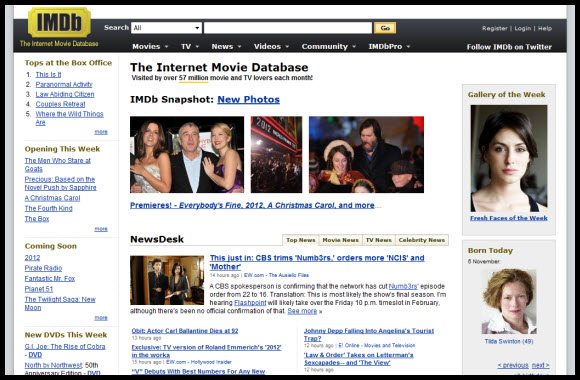 Perl has been around since 1987 and became an early darling of web developers. These days, however, you don’t hear much about Perl. Everyone seems to be talking about trendier languages like PHP, Python and Ruby, with Perl left in the back as a neglected, not-so-hip cousin.
Perl has been around since 1987 and became an early darling of web developers. These days, however, you don’t hear much about Perl. Everyone seems to be talking about trendier languages like PHP, Python and Ruby, with Perl left in the back as a neglected, not-so-hip cousin.
That might lead you to think that Perl is dying, but as it turns out, it’s still used by plenty of websites out there, including some pretty big hitters.
Here are some of the more popular sites that use Perl extensively today:
Amazon.com
IMDB
Slashdot
TypePad
LiveJournal
The Guardian
Salon.com
Ticketmaster
More sites (and apps) using Perl
When the subject of Perl was brought up here at the Pingdom office, we were not sure how widely used it is now in 2009, especially on the Web. That’s why decided to dig around a bit, which in turn led to this article. The above websites are just the tip of the iceberg, though. Here are even more examples of sites making extensive use of Perl:
- The Register
- Vox
- Magazines.com
- BBC
- Zappos.com
- Craigslist
- Delicious (At least it used to be coded in Perl, these days we’re not sure.)
Add to this all blogs using the Movable Type blogging software from Six Apart, which uses Perl. Prominent examples include The Huffington Post, Kottke.org, Boing Boing and ReadWriteWeb. And of course all blogs on the Typepad blogging service, which uses a special version of Movable Type.
There are also plenty of projects and applications using Perl, such as the already mentioned Movable Type and various web frameworks like Catalyst and Mason. Other examples include AWStats, Bugzilla and SpamAssassin.
In short, Perl is alive and kicking. A new version, Perl 6, is on its way but still under development. Although Perl may never recapture its glory days of the early Web in the ‘90s, it isn’t dying on us anytime soon. It has become the gray-haired distinguished old gentleman next to the young hotheads like Python and PHP.
We couldn’t help but finish off with this XKCD comic strip:

Gotta love it. 🙂


































